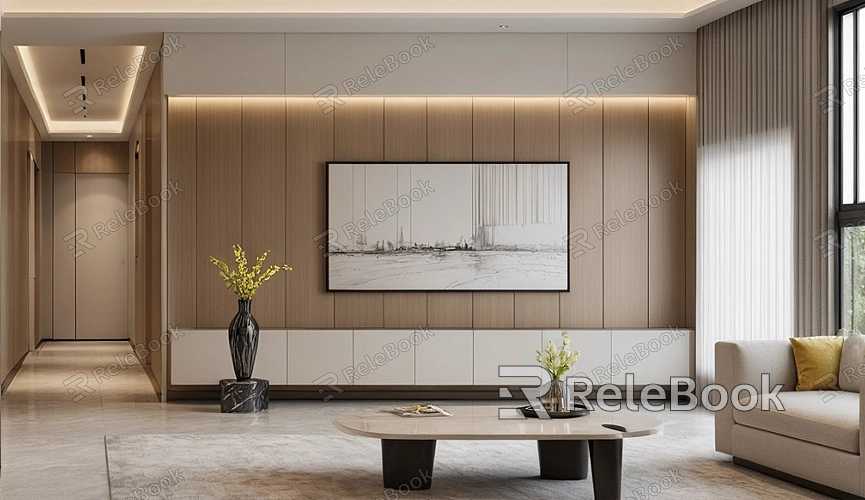How to Flatten 3D Models in AutoCAD?
In AutoCAD, flattening 3D models is a common and practical task, especially when converting complex 3D designs into 2D drawings. Mastering this skill is crucial for architects, mechanical engineers, and professionals who often need to transform three-dimensional objects into flat designs. Flattening a 3D model simplifies the design, making it clearer and easier to understand, modify, and print. This article will walk you through different methods of flattening 3D models in AutoCAD, from basic command usage to advanced techniques, helping you complete your design tasks more efficiently.

Understanding the Importance of Flattening 3D Models
Flattening a 3D model is the process of mapping a three-dimensional object onto a two-dimensional plane, making it easier to display in a flat drawing. This is especially important when generating construction drawings, production plans, or any other type of 2D design. By flattening, you transform a 3D design into a more readable and simplified 2D graphic without losing essential design details.
For AutoCAD users, flattening is not just about converting 3D geometry into a 2D view; it also involves adjusting perspectives, details, and scales to ensure clarity. Mastering this process is key to increasing work efficiency and minimizing errors.
Using AutoCAD Commands to Flatten 3D Models
The simplest method to flatten a 3D model in AutoCAD is by using the “FLATTEN” command. This command flattens all selected objects into a 2D plane, eliminating the complexity of the third dimension and making the design more straightforward.
Steps to Use the FLATTEN Command:
- Open the AutoCAD file and ensure you have a 3D model in your workspace.
- Select the objects you want to flatten.
- Type the “FLATTEN” command or click on the “Flatten” button in the toolbar.
- Choose the objects to flatten, ensuring all necessary graphic elements are selected.
- If needed, adjust the perspective and view before flattening.
- Once done, you will see the selected objects transformed into 2D graphics, with the 3D effects removed.
This method works for most situations where you need a quick and simple flattening solution, but for more complex designs, additional adjustments may be needed.

Adjusting Views and Perspectives for Better Flattening
In addition to the basic “FLATTEN” command, AutoCAD allows users to adjust the view and perspective to achieve more precise flattening. By changing the view, you can decide which face or part of the object you want to flatten, ensuring unnecessary elements don’t interfere with your design.
Steps to Use View Adjustments:
- Switch to a 3D view mode in AutoCAD and select an appropriate perspective, such as front view, top view, or side view.
- Based on your requirements, choose the corresponding view to flatten, such as flattening from the top view.
- Use the “FLATTEN” command to flatten the objects in this view.
- If you don’t want certain parts to be flattened, you can hide or delete them before flattening.
By adjusting the views and perspectives appropriately, you can achieve a more accurate flattening result and avoid losing important design information in the 2D output.
Using the "EXPORTTOAUTOCAD" Command for Flattening
For more complex 3D models, AutoCAD offers another effective flattening method—the “EXPORTTOAUTOCAD” command. This command is typically used to export the entire 3D model as a 2D drawing, ensuring that all details of the model are preserved during the export process.
Steps to Use the EXPORTTOAUTOCAD Command:
- Select the 3D model you wish to export, making sure that all relevant design work is completed.
- Type the “EXPORTTOAUTOCAD” command and choose the save location and file name.
- In the export settings, select the 2D drawing format, making sure to preserve necessary layers and details when flattening.
- After exporting, you can view the flattened design in the new 2D file.
This method is ideal for handling complex 3D models, especially when dealing with multiple views or requiring specific output formats.
Using the Unwrap Feature for Complex 3D Models
For certain geometrically complex 3D models, such as surfaces or irregular shapes, AutoCAD provides an “Unwrap” feature. This tool allows you to flatten curved or complex surfaces into 2D, making it easier to work with.
Steps to Use the Unwrap Feature:
- Select the parts of the model that need to be unwrapped.
- Type the “UNWRAP” command, or use the “Unwrap” option, and AutoCAD will automatically recognize and unfold the complex surface.
- After unwrapping, you can adjust and edit the 2D flattened shapes as needed.
This method is especially useful for high-precision flattening when dealing with complex curved or irregular shapes.
Saving and Outputting Flattened Results
Once you’ve flattened a 3D model, the next step is saving it in a format suitable for further use. In AutoCAD, you can choose to save the flattened design as a DWG file, or PDF, or export it to other vector formats for printing, sharing, or further editing.
Steps to Save and Output Flattened Designs:
- Ensure that the flattening process is complete and that all necessary details are included.
- Choose “File” > “Save” or “Export” to select the appropriate file format.
- If outputting as a PDF, you can use the print settings and select a “PDF” printer for output.
- After saving, you can use the flattened file for production, construction, or other downstream applications.
Saving and outputting the flattened file ensures that your work is preserved and ready for practical use.
Flattening 3D models in AutoCAD is a simple yet important skill that helps convert intricate 3D designs into clear, readable 2D drawings. Whether you are using the basic “FLATTEN” command, adjusting views, or utilizing the Unwrap feature for complex shapes, you can achieve efficient and precise results. Understanding these methods and choosing the right approach for your specific project needs will greatly enhance your workflow and minimize errors.
If you're looking for high-quality 3D models and textures for your next design project, visit the Relebook website to download the models and textures you need and take your design process to the next level.
FAQ
Why do some details get lost when flattening a 3D model?
Details might be lost during flattening due to the selected command and view settings. It’s important to carefully check the view settings before flattening and ensure that the right parts of the model are being flattened. Using the right perspective is key to preserving detail.
How can I avoid distortion after flattening?
To avoid distortion, it’s recommended to use the appropriate view and command, especially when working with complex 3D models. Adjusting the view before flattening helps ensure the most accurate conversion.
How can I edit the flattened drawing afterward?
Once flattened, the 2D drawing can be edited like any standard 2D AutoCAD drawing. You can use AutoCAD’s usual tools for modifications, annotations, and marking.
How do I flatten complex 3D models like curved surfaces or irregular shapes?
For complex curved surfaces or irregular shapes, AutoCAD’s “Unwrap” command is a great tool. This feature helps to flatten complex curves or geometries into 2D, ensuring accurate results.

